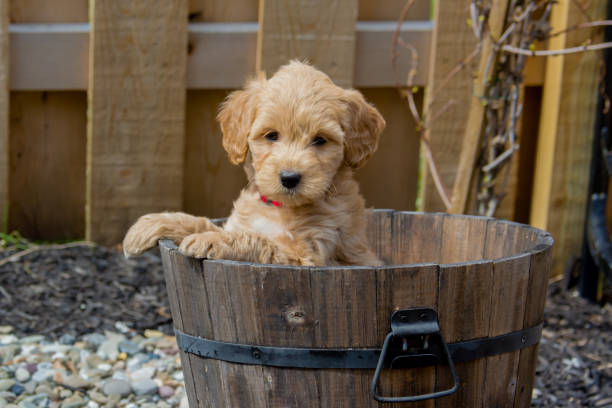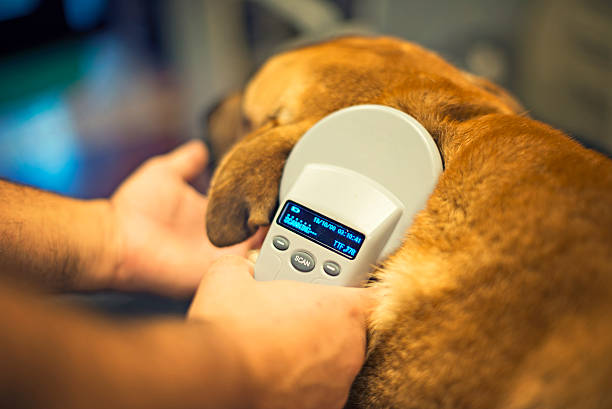Bathing your pet to keep them clean and smelling good can be an enjoyable activity. However, there’s some crucial preparation you need to carry out before getting started on this somewhat messy task. Continue reading our detailed guide on how to bathe a dog.
Making Sure it’s Safe to Wash Your Dog
If you’re not sure about your dog’s skin type or if their coat is sensitive to certain ingredients like soap, it may be best to consult with a vet before bathing a dog.
Wet the dog before the shampoo, and wet your pup’s coat with some warm water. Make sure that you don’t get water or shampoo into their eyes and nose.


Work From Head to Tail
Starting from the head and working down is usually easiest since dogs keep their heads up while standing in the tub.
Rinse Thoroughly
Once you’ve finished applying shampoo, make sure to thoroughly rinse your pup until all the suds are gone. You can use a showerhead or a cup with running water to help speed up the process. If you still notice leftover shampoo, repeat the process as necessary.
Dry Your Dog
Towel dry your dog’s coat as much as possible before moving on to a blow dryer. If it’s too cold outside to use a hairdryer inside, let your pup air dry for about 15 minutes before going outside so they can shake off excess water.


Brush Your Dog
Now is the perfect time to brush your pup’s coat and get out any burrs or mats in their fur. Brush their fur in the opposite direction of growth (fur grows outward, so you should brush in a downward motion) and make sure to get in between each strand of hair to release any tangles or dirt that might be trapped in their fur.
Pets Need Grooming, Too


Bathing your dog regularly is important for keeping them clean and healthy, but don’t forget about their grooming needs.
Bathing Problems (and How to Avoid Them)
While bathing a dog isn’t difficult, some problems can arise if you don’t know what you’re doing. For example, did you know that applying shampoo to their head and face first will make your pup more likely to shake it off into your face? Avoid this problem by applying shampoo to the back of the neck and working up from there.
Trim Those Nails
If you’re going to bathe your pup, trimming their nails is a must. Dogs don’t like having wet nail trimmers near their paws, so make sure you do it before their bath.


Know When to Skip the Bath
If your dog has an open wound, skip the bath and take them straight to the vet. If your pup is old or weak, make sure they are taken outside for some fresh air instead of taking a traditional bath. And finally, if your dog is aggressive, you should probably start looking for a new groomer or reevaluate just how much you trust yourself with that dog.
Pick the Right Tub
If there’s anything more frustrating than bathing a feisty pup, it’s probably bathing one in a small and slippery tub. Make sure your furbaby has plenty of room to move around by choosing a tub that is big enough for them.


Don’t Bathe Your Dog if…
Some dogs may only need to be bathed when they get dirty, while others require baths after they’ve been out in the rain or snow. Still, more can go several months without needing a bath at all in these cases, and it’s best to brush them regularly to remove excess hair and oil from their coats. Bathing your pet too often can strip their coat of natural oils, making them feel dry and uncomfortable. It could also lead to skin conditions such as yeast infections or hot spots. Also, avoid bathing your dog if:
- They have an open wound.
- They are old or weak
- They are aggressive
Don’t Forget the Towels
Make sure to have a few towels handy for drying off your pup!


Tips for Grooming Your Pet After the Bath
It is important to dry them off and comb through their fur. This will help prevent any tangles from forming and make brushing easier for you! When you’re done, try using a leave-in conditioner to help keep your dog’s skin hydrated.
Don’t Neglect Their Paws
Don’t forget to clean your pup’s paws after their bath! If you’re in the winter, this will help keep your feet from icing over. On walks, they can pick up all sorts of dirt, rocks, and trash that you’ll want to get rid of ASAP. If you don’t have a pet-specific soap, make sure to use mild baby shampoo.
Recommended Dog Shampoos
There are so many types of dog shampoos out there! Now is the time to break out your research skills and do some digging through internet reviews to find the perfect match for your pup’s coat type, skin sensitivities, and allergies. Below are some of the most popular types of shampoos to consider:
Normal or Oily Coats – Normal coats don’t require special shampoo so long as you brush them regularly to prevent mats and tangles. Healthy oils in your pup’s fur will keep it shiny and soft without needing an extra shampoo to strip it.
Sensitive or Infected Skin – Many shampoos are made specifically for pets with sensitive skin to ensure they aren’t as irritated as possible. They usually contain all-natural ingredients such as oatmeal and lavender and should be used as soon as you notice any redness or itchiness. Read the product’s label carefully to find the right shampoo for your pup.
Allergies – If your pup suffers from allergies, it may be best to use a shampoo free of any chemicals or dyes. Natural ingredients such as aloe and tea tree oil are usually used in these shampoos if they do not contain medicated, prescription-strength ingredients. Also, be sure to avoid any shampoos that contain oatmeal.
Recommended Dog Conditioners
If you have a long-haired dog with a dry or flaky undercoat, then consider using a leave-in conditioner in-between bath time and brushing sessions. By putting this product on your pup before brushing, you will help encourage the natural oils in their coat to spread evenly and reduce any snags or matting.
Recommended Dog Brushes
Brushing your dog is often an overlooked part of bathing time, but it shouldn’t be! Brushing helps distribute those important oils found in your pup’s fur and skin to make them feel soft and silky. And it can also help remove any dirt, parasites, or debris that your dog may have picked up on their last walk!
There are two types of brushes you will want to consider:
Pin Brushes – Pin brushes come with either metal or plastic pins that allow you to easily brush through longer coats. They work well with breeds such as golden retrievers and German shepherds with thick coats and thin undercoats.
Slicker Brushes – Slicker brushes work well for the best of dogs who may have thinning fur, mats, or tangles. They’re perfect for medium-length coats such as beagles and Boxers.
Recommended Shampoos for Specific Dog Breeds
Remember, one size does not fit all! There are so many different breeds out there that you will want to consider your dog’s coat and skin type to choose the best shampoo. Here is a list of some popular types and examples:
Hairless Shampoo – Great for dogs with thin coats, especially if they are prone to skin infections.
Waterless Shampoo – Great for dogs with allergies or sensitive skin, as this type is usually made with natural ingredients. It is also helpful when your pup gets too dirty after a walk and you don’t have the time to give them a full bath!
Chew-proof Shampoo – Great for puppies who like to chew on their fur or breeds with long coats.
Sensitive Shampoo – Great for pets with skin conditions such as eczema and dermatitis.
Natural Oat Shampoo – Great for dogs suffering from skin irritations. Most contain an oatmeal extract that has natural soothing properties.
Medicated Shampoo – Great for dogs with skin infections, allergies, or any conditions. Medicated shampoos usually contain benzoyl peroxide, sulfur, or salicylic acid to prevent and treat infections.
Shampoo to Avoid
Oatmeal Shampoo – While it may sound like the best option to help your pup’s sensitive skin, oatmeal shampoo can actually irritate their skin even more by making it too dry.
Citrus Shampoo – Citrus-scented products can be irritating for your dog’s eyes if they get any shampoo in them because of the acidity.
Tea Tree Oil Shampoo – While this is an all-natural ingredient that is great for humans, it is best to avoid using tea tree oil shampoo on your dog as it can be toxic.
Chlorhexidine Shampoo – While this ingredient may effectively treat skin conditions such as ringworm, it should never be used on dogs with open wounds or cuts because it easily irritates them and slows down healing.


Warm Water Is Important
Since dogs don’t have sweat glands in their skin like humans, it’s important to be extra gentle when bathing your pup. Warm water helps relax them and make sure the shampoo will spread across their fur evenly without drying out sensitive areas. It can also get rid of any debris or dirt that may cause infections later on! Make sure to avoid any products that might irritate their eyes, nose, or mouth.
Make Sure Your Dog is Comfortable but Not Too Wet
After you have lathered your pup’s fur with shampoo, don’t rinse it all out right away unless there are any leftover bubbles. It can take up to 10 minutes for your dog to become fully comfortable getting bathed, so make sure they are distracted by a favourite toy or treat. However, you don’t want to leave them too wet because their fur can prevent them from regulating their body heat. Also, remember that certain breeds have sensitive skin, so keep the shampoo on for no more than 10 minutes before rinsing it off completely.
Conclusion
Furry friends can be difficult to bathe, which is why it’s so important to know the right techniques. Whether you’re looking for a shampoo that keeps your pup dry or one with soothing properties, our guide will help you get started on choosing the best product for their unique needs. We hope this article has helped ease any of your worries about bathing your dog and given you some useful tips.


